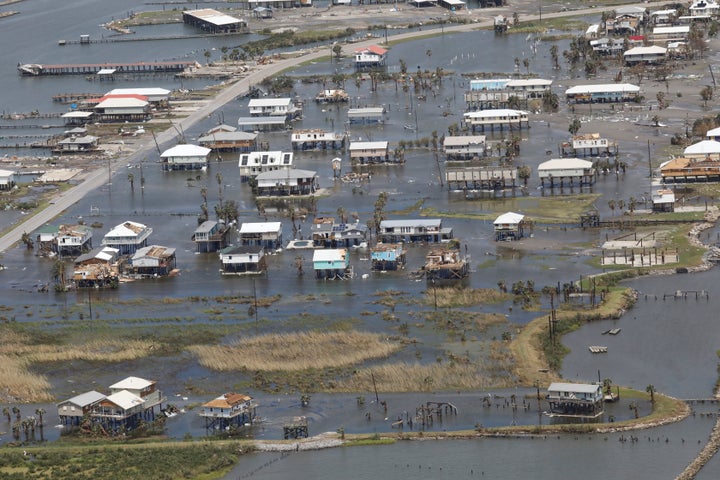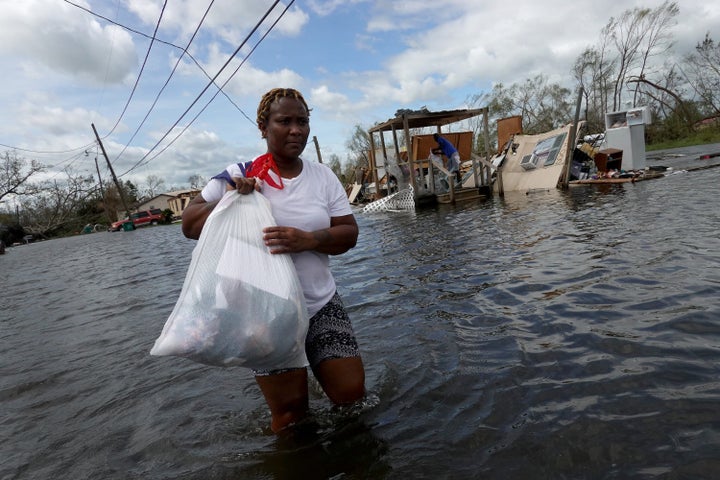The remnants of Hurricane Ida walloped the Northeast late Wednesday and early Thursday, delivering record rainfall in parts of New York and triggering flash flooding across multiple states. At least 14 fatalities were reported in New York, New Jersey and Pennsylvania, bringing the storm’s estimated death toll to 21.
Earlier, after Hurricane Ida smashed into the Louisiana coast as a catastrophic Category 4 storm, Gov. John Bel Edwards (D) warned that the death toll was likely to rise sharply as rescue crews scoured neighborhoods left in ruin. At that point, officials had confirmed just seven storm-related fatalities: three Louisiana residents, two electrical workers in Alabama and two people who died when floodwaters collapsed a highway in Mississippi.
But if previous record-breaking storms are any guide, Ida’s toll could climb further. That’s because even though evacuations and beefed-up coastal protections help spare lives as the storm rages, flooding, blocked roads and a blackout expected to last weeks threaten lives with waterborne illnesses, a lack of food and medicine, and no electricity to run vital medical equipment or keep insulin refrigerated. Those at risk are mostly poor people who couldn’t afford the gas to leave or a hotel room to which they could flee.
Fatalities directly and indirectly tied to Hurricane Katrina, for example, are still a matter of public debate 16 years after the storm. Katrina hammered New Orleans and much of the Southeast in September 2005, and the estimated deaths slowly crept up, from 964 in early October 2005 to 1,306 in late November. The official tally currently stands at more than 1,800, according to federal statistics.
Hurricane Maria and Superstorm Sandy were similar stories. It wasn’t until nearly a year after the 2017 hurricane ravaged Puerto Rico that the territorial government revised its official storm death toll from 64 to 2,975 in response to the findings of a government-commissioned study. A separate investigation by Harvard researchers concluded that more than 4,600 people died in the aftermath, primarily due to interruptions in medical care.
Sandy, which hit the Northeast in October 2012, left some of the poorest neighborhoods in the country’s richest metropolitan areas without power and inundated with water that, if it didn’t destroy homes outright, later rendered them uninhabitable with toxic mold.

Ida, which tied last year’s Hurricane Laura as the most powerful storm to make landfall in Louisiana, has left more than 1 million people without electricity and 300,000 without access to clean water. Officials have said it could be weeks before power is fully restored. Adding to the suffering is a heat wave gripping much of Louisiana and Mississippi, with the heat index reaching 100 degrees.
And the remnants of Ida continue to pack a punch as the system moves up the East Coast, threatening torrential rains and flash flooding as far as Maine.
Susan Cutter, director of the Hazards & Vulnerability Research Institute at the University of South Carolina, said it’s important to recognize that hurricane death tolls are estimates, based largely on media reporting of fatalities during a specific window of time, and often don’t paint a complete picture. Fatalities in the wake of the storm — exposure to extreme heat or carbon monoxide poisoning from generators during power outages or from inland flooding long after the hurricane is downgraded — may or may not end up in the official tally.
“It’s a problem with attribution,” she said. “It’s how you count deaths, how you attribute the deaths to a particular event and how long do you count for those deaths. It could be weeks to months, and we could still see the aftereffect where the major contributing factor was the hurricane.”

Cutter said the COVID-19 pandemic could further distort Ida’s official death toll. Many hospitals across the South were at or near capacity when the storm struck and were overflowing with coronavirus patients amid the surge of the delta variant.
“The coroners who are filling out the death certificates, frankly, just do not have time to do a lot of the paperwork” that ultimately ends up in public health databases, she said.
Preventing additional loss of life often hinges on the ability to distribute essential supplies. Hani Mahmassani, a transportation and logistics expert at Northwestern University, said that, although damage to the power grid is the biggest issue in Louisiana, he’s heard a shortage of truck drivers has prevented necessary supplies from reaching hard-hit communities.
“I’m hopeful that with sufficient resources, particularly using vertical-lift helicopters, one might be able to prevent something as bad as what we had in Puerto Rico, where you had areas that were completely cut off,” he said. “In this case, you do get a sense that the authorities are a little more on top of things.
“Vulnerable populations are always going to suffer,” he added. “We will see unfortunate casualties related to that lack of supplies. But this is the challenge and this is where a lot of the relief workers and authorities are trying to focus and reestablish power as soon as possible.”
This article has been updated to include Ida’s toll in the Northeast.
